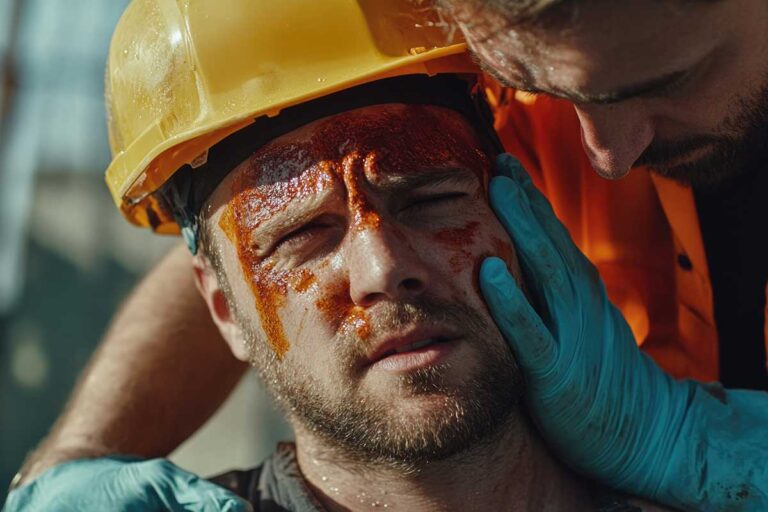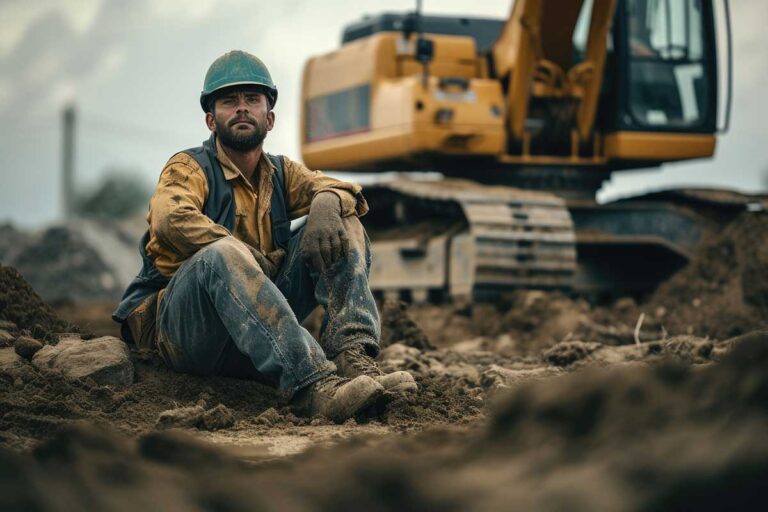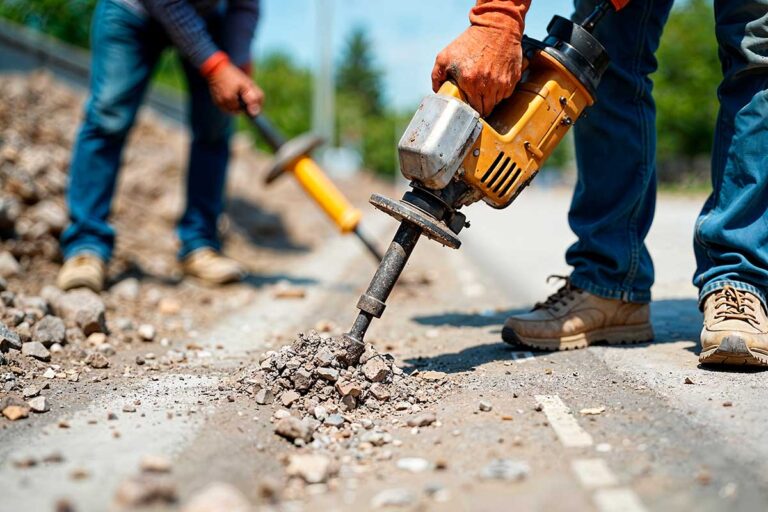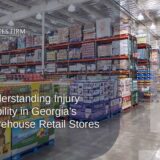Common Construction Accidents in Georgia — Safety Insights for Workers
The construction industry is an integral part of Georgia’s economy, providing numerous job opportunities. However, it is also associated with a variety of occupational hazards that can lead to serious accidents and injuries. The most common construction accidents in Georgia include falls from heights, struck-by incidents, electrocutions, and caught-in/between accidents. These incidents are often referred to as construction’s “Fatal Four” by the Occupational Safety and Health Administration (OSHA), as they account for the majority of fatalities in the industry. Understanding these risks is crucial for both workers and employers, as it enables better safety measures and protocols to be put in place. This article will explore the most common construction accidents in Georgia, examining how they occur and identifying preventive measures to minimize their occurrence.
Falls
Falls rank among the most common and hazardous accidents encountered in the construction industry. Workers frequently engage in tasks at significant heights, whether on scaffolding, ladders, or rooftops, which markedly heightens the likelihood of falls. Such incidents can lead to serious injuries including fractures, traumatic brain injuries, and spinal cord damage.
The repercussions of a fall can be profoundly damaging, resulting in long-lasting disabilities or even fatalities. It is essential to adhere strictly to safety protocols—such as utilizing appropriate fall protection gear and conducting routine inspections of work environments—to mitigate these risks effectively.
Beyond the immediate physical harm inflicted by falls, there are substantial emotional and financial ramifications for those affected. The journey to recovery can be lengthy and challenging, often necessitating extensive medical intervention, physical rehabilitation, and occasionally surgical procedures.
The financial strain associated with medical care and the potential loss of income during recovery can present significant challenges for workers and their families. Employers must prioritize safety training and ensure that all equipment is well-maintained and compliant with safety standards.
Injured In A Construction Accident? Contact Us For A Free Consultation
Injured In A Construction Accident?

Struck by Objects
Construction workers are at risk of being struck by falling objects or moving machinery due to the dynamic nature of construction sites. Workers face the risk of being struck by tools, materials, or debris that could lead to severe injuries. This category also includes being struck by vehicles on site. These events may result in serious injuries, such as fractures and head injuries.
In addition to falling objects, hazards can arise when heavy machinery is in use. Construction workers often find themselves in proximity to cranes, forklifts, and other large equipment that present dangers if not managed properly. It is vital that operators receive adequate training and that there is effective communication on-site to reduce the likelihood of accidents.
Site supervisors need to enforce safety measures strictly, ensuring workers maintain a safe distance from operating machinery.
Electrocutions
Electrocutions are another prevalent hazard faced by construction workers. Contact with live wires, faulty electrical systems, or power lines can lead to serious injuries or fatalities. Injuries from electrocution can include severe burns and nerve damage.
To prevent electrocution, qualified electricians must perform all electrical work and conduct regular inspections of electrical systems. Implementing safety measures, such as ground-fault circuit interrupters (GFCIs), can further reduce risks.
The aftermath of an electrocution event can lead to profound changes in a survivor’s life. Individuals who endure such incidents frequently experience lasting health challenges, including chronic pain, neurological disorders, and psychological distress. The severe pain and tissue damage associated with electrical burns often necessitate comprehensive medical intervention and rehabilitation efforts.
To enhance safety on construction sites, it is essential to adopt rigorous safety protocols. This includes utilizing ground-fault circuit interrupters (GFCIs) and ensuring that only qualified electricians conduct electrical work. Additionally, conducting regular safety audits and promptly addressing any identified electrical hazards are vital steps in minimizing the likelihood of electrocution incidents.
Survivors of electrocution often face long-lasting health challenges, underscoring the importance of adhering to safety protocols in electrical work.

Caught-In/Between Accidents
Caught-in/between incidents occur when workers become trapped between objects, such as machinery or collapsing structures. These accidents can have devastating consequences, leading to severe injuries, including crushed limbs or internal trauma.
The impact of these injuries can be critical, often necessitating immediate medical intervention and typically leading to prolonged rehabilitation. To mitigate the risk of such accidents, it is crucial to provide comprehensive training on operating heavy equipment and to conduct regular safety inspections.
These accidents can arise in various contexts, particularly when employees are engaged with heavy machinery or are situated near moving components. For example, a worker may become entangled in the moving parts of a machine, potentially resulting in severe injuries or amputations.
Trench collapses represent another prevalent cause of caught-in/between incidents. When a trench collapses, workers can become buried beneath soil and debris, which may lead to suffocation or crush injuries. Implementing effective shoring techniques and consistently monitoring trench conditions are vital measures to prevent these catastrophic events.
Regular safety training and thorough inspections of equipment and work conditions are vital in preventing these types of accidents.
Repetitive Motion Injuries
Workers in construction often engage in repetitive tasks that can lead to chronic conditions over time. Common repetitive motion injuries include tendonitis and carpal tunnel syndrome, which can severely impact a worker’s ability to perform their job.
These conditions develop gradually and can significantly hinder a worker’s job performance. To minimize the risk of these injuries, implementing ergonomic practices and encouraging regular breaks for workers is essential.
Repetitive motion injuries are particularly deceptive due to their gradual onset; they often remain unnoticed until they reach a critical stage. Workers engaged in activities such as lifting, hammering, or using vibrating tools are at heightened risk. The continuous repetition of these actions can cause deterioration of bodily tissues, resulting in inflammation and discomfort.
Employers can minimize these risks by implementing ergonomic practices, providing tools designed to reduce strain, and encouraging regular breaks. Early reporting of discomfort can help prevent the escalation of these injuries.
Burns
Burns are another significant risk on construction sites, often resulting from electrical, chemical, or thermal sources. The severity of burn injuries can necessitate extensive medical treatment and rehabilitation.
Burn injuries on construction sites can stem from multiple origins, such as electrical sources, exposure to chemicals, and thermal incidents related to hot machinery or explosions. These injuries may lead to significant harm to the skin and surrounding tissues, often necessitating comprehensive medical intervention and rehabilitation.
The discomfort and potential scarring associated with burns can profoundly affect an individual’s quality of life, underscoring the necessity of utilizing appropriate protective gear and adhering to safety procedures when dealing with hazardous materials.
Chemical burns pose a particularly high risk due to their ability to penetrate the skin and inflict deep tissue damage. It is essential for workers engaged with chemicals to receive proper training on the correct usage and storage of these substances, alongside consistently donning protective clothing and equipment.
In instances of chemical spills, prompt action is critical for neutralizing the hazardous material and mitigating further injury. Thermal burns, which frequently occur from contact with heated surfaces or equipment, can also be severe.
To prevent burns, workers should always wear appropriate protective gear and follow safety protocols when handling hazardous materials. Immediate action is required in the event of a chemical spill to neutralize the substance and minimize injury.

Respiratory Issues
Construction workers are frequently exposed to hazardous materials such as dust, asbestos, and silica, which can lead to serious respiratory conditions. Long-term exposure can result in chronic diseases, emphasizing the need for proper respiratory protection and dust control measures.
Chronic inhalation of fine dust particles may lead to silicosis, a lung condition resulting from the inhalation of crystalline silica dust. This disease can severely damage lung tissue and often causes irreversible effects.
Additionally, exposure to asbestos presents another significant health threat, potentially causing conditions such as asbestosis, lung cancer, and mesothelioma.
Even short-term exposure to asbestos fibers can be detrimental. It is imperative for employers to ensure that all personnel are well-informed about these risks and equipped with essential protective gear, including respirators and masks. Furthermore, consistent air quality assessments along with efficient ventilation systems are vital in reducing exposure to hazardous substances.
Hearing Loss
Construction sites are inherently loud, and extended exposure to elevated noise levels can result in permanent hearing loss. This issue is prevalent yet frequently underestimated among construction personnel. The consequences of hearing loss may be irreversible and can greatly diminish a worker’s quality of life.
Major contributors to noise pollution on construction sites include heavy machinery, power tools, and explosive activities. To mitigate the risk of auditory damage, it is crucial to utilize hearing protection devices and consistently monitor ambient noise levels. The onset of hearing loss due to continuous exposure to high decibel levels is typically gradual, which can make it challenging for workers to notice until substantial harm has occurred.
Regular monitoring of noise levels and providing adequate ear protection can help prevent hearing damage. Early detection of hearing loss through regular testing is also crucial for timely intervention.
Vehicle-Related Accidents
Accidents involving construction vehicles can result in serious injuries or fatalities. Given the presence of forklifts, cranes, and trucks, it is crucial for operators to undergo thorough training and for vehicles to receive regular maintenance.
These accidents can manifest in several forms, such as collisions, rollovers, or workers being struck by moving vehicles. The operation of heavy machinery demands specialized training along with strict compliance with safety regulations.
Employers must guarantee that all operators possess the appropriate certifications and that vehicles undergo routine inspections and maintenance to avert mechanical failures. Additionally, implementing clear communication and signaling protocols can significantly reduce the risk of accidents between vehicles and personnel on site.

Legal Considerations for Injured Workers
Workers’ Compensation Claims
In Georgia, construction workers injured on the job can seek workers’ compensation benefits, which cover medical expenses, wage replacement, and rehabilitation. This system provides support without requiring proof of employer fault.
The primary objective is to ensure that the injured worker receives appropriate medical attention and financial assistance throughout their recovery process. Workers’ compensation encompasses a wide range of injuries, from minor strains to serious accidents. The benefits typically cover medical expenses, a percentage of lost earnings, and rehabilitation costs.
Depending on the nature and extent of their injuries, workers may qualify for either temporary or permanent disability benefits.
Prompt reporting of injuries and adherence to procedural guidelines are vital for ensuring timely access to benefits.
A personal injury lawyer in the South Atlanta area can advise you on how to proceed with your case if you have been involved in a construction accident.
Third-Party Liability Claims
Construction workers who sustain injuries may have the opportunity to pursue third-party liability claims. These claims are not directed at the employer. They are directed at individuals or entities other than the employer, including equipment manufacturers, contractors, or property owners.
In contrast to workers’ compensation claims, which do not require proof of fault, third-party liability claims necessitate demonstrating negligence on the part of a third party. The manufacturer of the equipment could be held accountable for harming an employee due to defective machinery.
Such claims can lead to additional financial recovery for pain and suffering—compensation typically excluded from workers’ compensation benefits. To substantiate their claims, injured workers should compile evidence such as photographs from the accident site, witness testimonies, and maintenance logs.

GEORGIA PERSONAL INJURY LAWYER NEAR ME
Importance of Legal Representation
Navigating the complexities of workers’ compensation and personal injury law can be challenging. Having an experienced attorney can help injured workers understand their rights, gather necessary evidence, and negotiate with insurance companies to ensure fair compensation.
Legal professionals can also assist in identifying potential third-party claims, guiding workers through the process, and maximizing their compensation.
Expertise in Legal Procedures and Documentation
Legal procedures and documentation are intricate and substantial. An attorney well-versed in workers’ compensation, occupational safety, and personal injury law possesses the knowledge necessary to navigate the specific steps required for properly filing a claim.
This level of expertise is crucial in avoiding errors that could potentially postpone or threaten a claim’s success. Attorneys ensure that all forms are filled out correctly and submitted on time, protecting workers’ entitlements to benefits and compensation.
Negotiating with Insurance Companies
Insurance providers often seek to reduce their payout amounts or outright deny claims. Engaging a knowledgeable attorney can significantly enhance the negotiation process with insurance adjusters, leading to a more equitable settlement. These professionals possess the expertise to construct a robust argument by utilizing medical documentation, witness accounts, and expert analyses that bolster the claim.
By managing all communications with the insurance company, attorneys shield injured workers from strategies designed to undermine their compensation.
Maximizing Compensation
Having legal representation is vital for ensuring that injured workers obtain the highest possible compensation. This encompasses not only medical expenses and lost income but also future healthcare requirements, rehabilitation costs, and non-economic damages such as pain and suffering.
An attorney assesses these various costs precisely. The attorney advocates for comprehensive compensation. The compensation accurately reflects the injury’s full impact on the worker’s life.
Addressing Disputes and Appeals
Workers’ compensation lawyers are essential when a claim is contested or rejected. An attorney can advocate for the employee during hearings and appeals, effectively presenting evidence and arguments aimed at reversing the denial.
Their knowledge is essential for comprehending the legal basis for appeals and skillfully maneuvering through the appeals procedure.
Peace of Mind
Moreover, securing legal representation offers reassurance to injured workers and their families. With a skilled personal injury attorney managing the legal facets of the case, the worker can concentrate on recovery without the burden of handling a claim.
Need a Free Consultation? Need a Skilled Attorney?
Free Consultation
Call (770) 771-5130
If you’ve been injured, you need to hire the best legal care to assist you with your claim. Get a FREE consultation today!
Legal Help with Construction Accidents in Georgia
Construction injuries can have profound impacts on workers and their families. Understanding the common types of construction accidents and the associated legal considerations can empower individuals to advocate for their rights and prioritize safety on construction sites.
If you or someone you know has suffered a construction-related injury in Georgia, consider reaching out to a qualified attorney for guidance and support in navigating the claims process. The Jewkes Law Firm’s attorneys will guide you through each phase of your claim. Don’t navigate this challenging period alone—reach out to us today at (770) 771-5130 for a complimentary consultation. Allow us to champion your rights and support you in moving forward.





